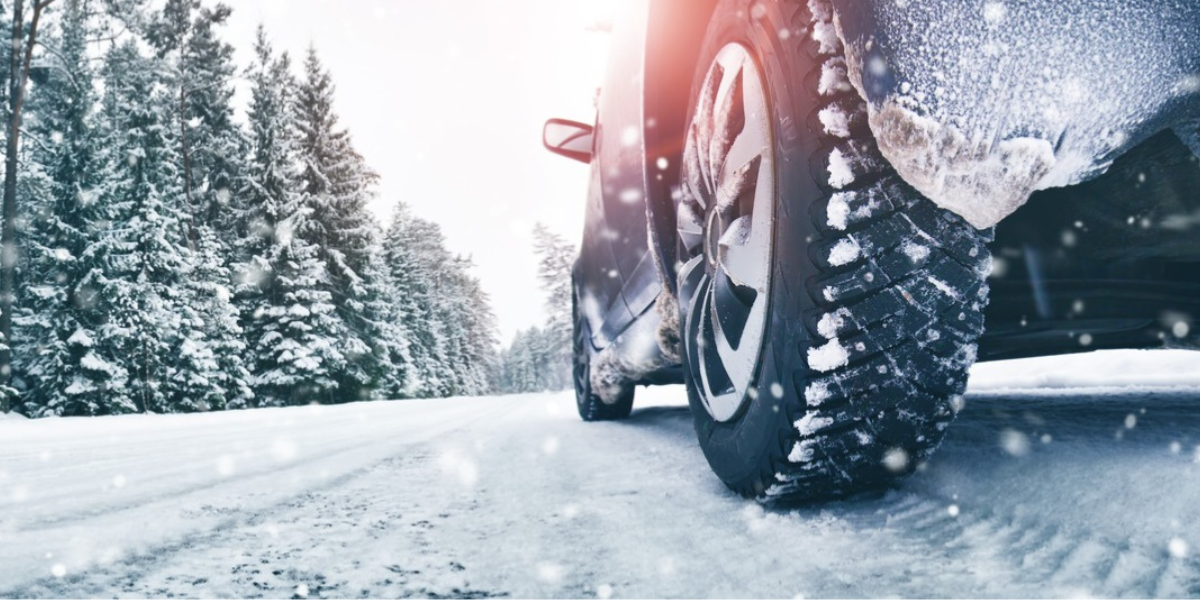As winter blankets the landscape in a serene layer of snow, it also brings along its own set of challenges for drivers. Navigating icy roads, reduced visibility, and unpredictable weather conditions can make winter driving hazardous. However, with some practical tips and precautions, you can ensure a safe and smooth journey on the wintry roads.
Stay Informed:
Check weather forecasts and road conditions before heading out. If conditions are severe, consider delaying your trip or using public transportation if possible. Stay informed about the current weather and road conditions to plan your journey accordingly.
Take a few minutes to review our Winter Car Checklist — it covers everything from checking your battery to ensuring your tires are road-ready.
Drive Slowly and Smoothly:
One of the most effective ways to stay safe on icy roads is to reduce your speed. Accelerate and decelerate gradually to avoid skidding. Sudden movements can lead to loss of control on slippery surfaces.
Want to sharpen your skills behind the wheel? AAPEX Driving Academy, operated by CAA Niagara, offers winter driving courses designed to help drivers stay confident and calm in winter conditions.
And remember, slowing down isn’t just about safety — it’s part of a broader culture of respect for all road users. Learn more through our Slow Down, Move Over campaign and see how you can help protect roadside workers this season.
Maintain a Safe Following Distance:
Increase the distance between your vehicle and the one in front of you. This gives you more time to react in case of sudden stops or skidding. Remember that it takes longer to stop on icy roads.
To better understand why extra space matters on winter roads, check out our Science of Stopping blog — it breaks down how factors like speed, weight, and road conditions affect your vehicle’s stopping distance.
Brake with Caution:
Use gentle and steady pressure on the brakes to avoid skidding. If your vehicle has an anti-lock braking system (ABS), apply constant pressure and let the system do the work. If you don't have ABS, pump the brakes gently to prevent wheel lock-up.
Visibility is Key:
Clear all snow and ice from your vehicle before starting your journey, including your windows, mirrors, lights, and roof. Neglecting this step poses serious risks, as accumulated snow can dislodge while driving, becoming a hazard to you and others on the road.
Use your headlights and fog lights when necessary to improve visibility, especially during snowfall or foggy conditions. Replace worn-out windshield wipers and keep washer fluid topped up. Use your headlights, even during the day, to increase visibility for yourself and others.
And of course, visibility isn’t just about clear windows — it’s about being seen. Always keep a reflective vest or warning triangles in your winter emergency car kit so you’re visible to other drivers if you need to pull over.
Beware of Black Ice:
Black ice, a thin layer of nearly invisible ice, can be extremely treacherous. Be extra cautious on bridges, overpasses, and shaded areas where black ice is more likely to form. If you encounter black ice, do not panic – keep the steering wheel straight and let the vehicle pass over it.
For added protection on slippery roads, learn why winter tires matter and how they outperform all-season tires when temperatures drop below 7°C. A good set of tires can be your best defense against black ice and unpredictable weather.
Emergency Kit:
Prepare an emergency kit for your car, including items like a blanket, flashlight, extra warm clothing, non-perishable snacks, and a first aid kit. CLICK HERE to read more about essential items to have in your winter emergency car kit. In case of a breakdown or getting stuck in snow, having these essentials can make a significant difference.
For extra peace of mind, schedule a CAA Mobile Battery Test. It’s quick, affordable, and ensures you’re not left stranded when the temperature dips.
Practice Defensive Driving:
Stay alert, focused, and anticipate potential hazards. Be mindful of other drivers and road conditions. Avoid distractions such as texting or talking on the phone while driving in winter conditions.
Keep Your Gas Tank Full:
In winter, it's advisable to keep your gas tank at least half full. This precaution not only helps prevent the fuel line from freezing but also ensures that you have enough fuel in case of unexpected delays or emergencies.
Carry your CAA Niagara Membership with you:
Make sure you carry your Membership card with you or that you are logged in to the CAA App, wherever you go. Not only is it your connection to reliable Emergency Roadside Assistance but Members get special benefits in a lot of unexpected places.
Remember, patience and caution are your best allies when it comes to winter driving. By taking these precautions, you'll not only protect yourself but contribute to making the roads safer for everyone during the chilly winter months.
More from CAA Niagara
 Ontario
Ontario